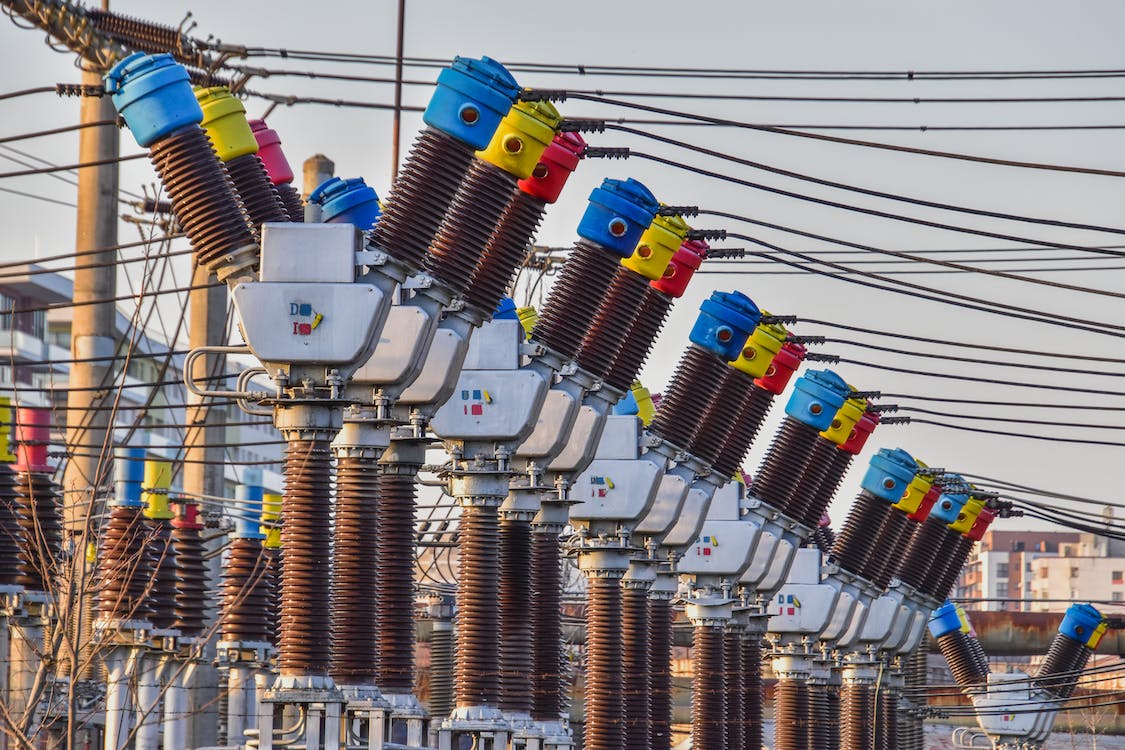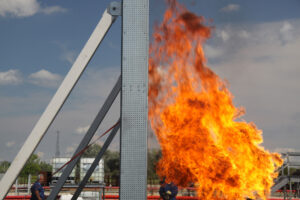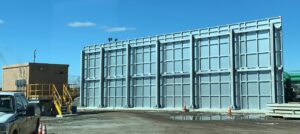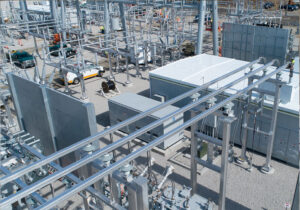Transformer fires are a common and potentially catastrophic occurrence in the power industry. The failure of a transformer can lead to a domino effect of damage, causing widespread blackouts and even posing a threat to public safety. Transformer fire protection is essential in preventing these events from happening, but despite all precautions, fires can still break out. In this article, we will explore the causes and consequences of a transformer fire that broke out in a substation, and the chain reaction that followed, highlighting the importance of transformer fire protection and the potential consequences of failure.
What Causes Transformer Fires?
Transformer fires can be caused by a variety of factors, some of which are listed below:
- Overheating: Transformers generate a lot of heat during operation, and if this heat is not dissipated properly, it can cause the insulation and oil inside the transformer to break down, leading to a fire.
- Electrical faults: Electrical faults such as short circuits and overloading can cause the transformer to overheat and potentially ignite.
- Contamination: Moisture and other contaminants can cause the insulation to break down and increase the likelihood of a fire.
- Age and wear: As transformers age, the insulation and other components can deteriorate, making them more prone to failure and fire.
- Human error: Mistakes made during installation, maintenance, and operation of the transformer can lead to fires, such as accidentally dropping a tool inside the transformer or incorrectly connecting the wiring.
- External factors: Fires can also be caused by external factors such as lightning strikes, flooding, or vandalism.
It is important to note that these factors do not always act alone but can interact with each other to create a chain reaction that leads to a fire. For example, overheating caused by an electrical fault can lead to insulation breakdown, which can in turn cause further overheating and ultimately result in a fire. To prevent transformer fires, it is important to address and mitigate all potential causes of failure and to have proper transformer fire protection measures in place.
Chain Reaction of Transformer Fires
Once a transformer fire starts, it can quickly escalate and lead to a chain reaction. The chain reaction of transformer fires can be described as follows:
- Insulation Ignition: The insulation materials inside the transformer, such as paper, wood, and plastic, can ignite due to overheating.
- Combustion of Oil: The oil in the transformer can also ignite due to the high temperatures.
- Explosion: The ignition of the oil can cause an explosion, which can lead to the release of flammable gases and further fuel the fire.
- Spread of Fire: The fire can spread to other transformers or nearby equipment, leading to a widespread outage.
The chain reaction can occur due to several factors, including:
- Overheating: Transformers generate heat during operation, and if the temperature exceeds the acceptable limit, it can lead to a fire. If one transformer catches fire, the heat generated can spread to adjacent transformers and cause them to overheat and catch fire as well.
- Explosion: A transformer explosion can cause damage to nearby transformers, leading to oil leaks and fires. The explosion can also cause equipment to malfunction, which can lead to electrical faults and additional fires.
- Lack of isolation: Transformers are often connected to each other in a substation, and if one transformer fails, it can cause a surge in voltage that can damage other transformers. If the transformers are not isolated properly, the surge can spread to other transformers and cause them to fail as well.
- Faulty equipment: Electrical equipment can malfunction, and if a fault occurs in one transformer, it can cause a fire. The fire can spread to other transformers if the equipment is not isolated or protected.
To prevent a chain reaction of transformer fires in a substation, proper isolation and protection measures must be in place. This includes installing fire-resistant barriers between transformers, ensuring that transformers are properly grounded, and using protective equipment such as circuit breakers and fuses to isolate faulty equipment. Regular maintenance and inspections of transformers can also help prevent fires by identifying potential issues before they escalate.
Consequences of Transformer Fires
Transformer fires can have severe consequences, both in terms of human safety and economic loss. Some of the consequences of transformer fires are:
- Human Safety: Transformer fires can result in injuries or fatalities of personnel working in the vicinity of the transformer. The release of toxic gases during the fire can also pose a threat to human health.
- Power Outages: Transformer fires can cause power outages, which can affect the operations of industrial, manufacturing, or power plant facilities. The loss of power can lead to the shutdown of critical systems and result in production loss and revenue loss.
- Property Damage: The fire can cause extensive damage to the transformer and nearby equipment, resulting in significant repair and replacement costs.
- Environmental Impact: Transformer fires can also have a significant environmental impact. The release of oil and toxic gases during the fire can contaminate the soil and water bodies in the vicinity.
Prevention and Mitigation of Transformer Fires
Preventing transformer fires is crucial to ensuring the safety of personnel and minimizing the economic impact of the fire. Some of the prevention and mitigation measures that can be implemented are:
- Regular Maintenance: Regular maintenance of transformers can help detect any potential issues before they escalate into a fire. Maintenance activities include checking for oil leaks, inspecting insulation, and cleaning the transformer.
- Load Management: Overloading of transformers can be prevented by implementing load management strategies, such as load shedding or load balancing.
- Fire Barrier Systems: Preventing the fire from spreading to other transformers is essential at substations with multiple transformers. It also can protect people and other types of property and equipment from damage. These barriers can also be hardened to prevent line of sight and repel gunfire to deter vandalism attempts.
- Emergency Response Plan: Having an emergency response plan in place can help personnel respond quickly and effectively in the event of a transformer fire. The plan should include procedures for evacuating personnel, shutting down equipment, and contacting emergency services.
Transformer fires can have severe consequences, including human safety, power outages, property damage, and environmental impact. Understanding the chain reaction of transformer fires and implementing prevention and mitigation measures can help minimize the risk of transformer fires and their consequences. Regular maintenance of transformers, load management, and installation of fire suppression systems can help prevent transformer fires. Having an emergency response plan in place can help personnel respond quickly and effectively in the event of a transformer fire.
It is also important to note that transformer fires can occur unexpectedly and without warning. Therefore, it is crucial to have the proper training for personnel working in the vicinity of transformers, including fire safety training and knowledge of emergency response procedures.
The chain reaction of transformer fires and their consequences can have a significant impact on industrial, manufacturing, and power plant properties. Are you looking for reliable transformer fire barriers for your facility? Visit https://firebarrierexperts.com/ to talk to the experts.
Name, Address, and Phone number
Sinisi Solutions
75 Main St, Manasquan, NJ 08736
732-232-2100




